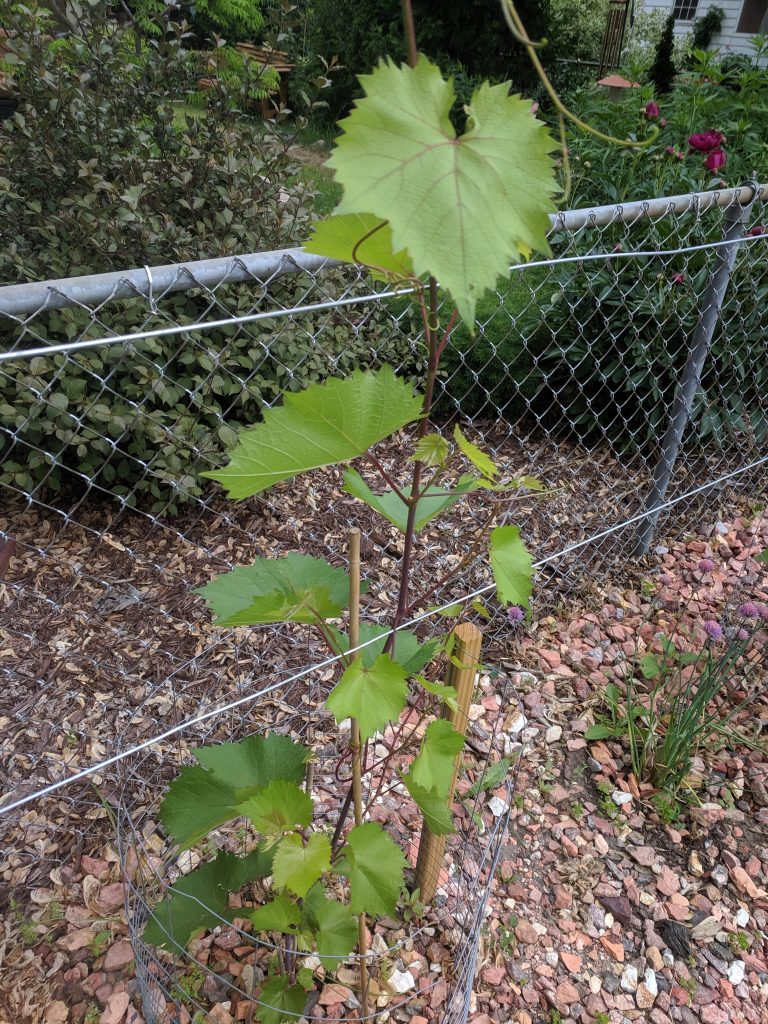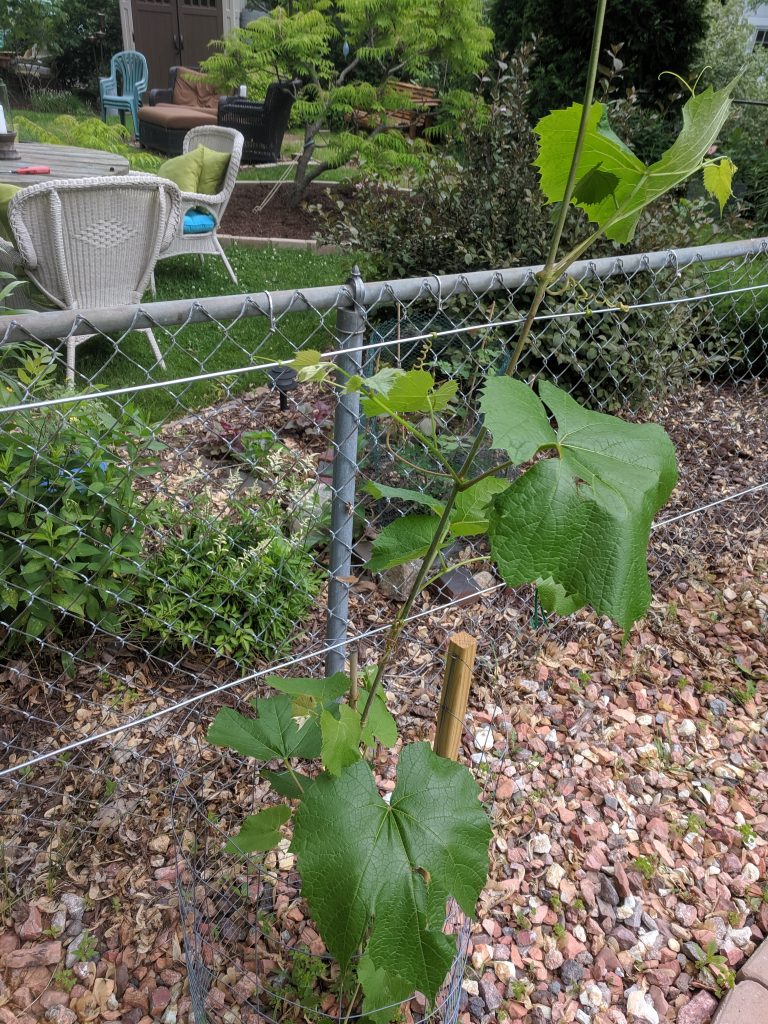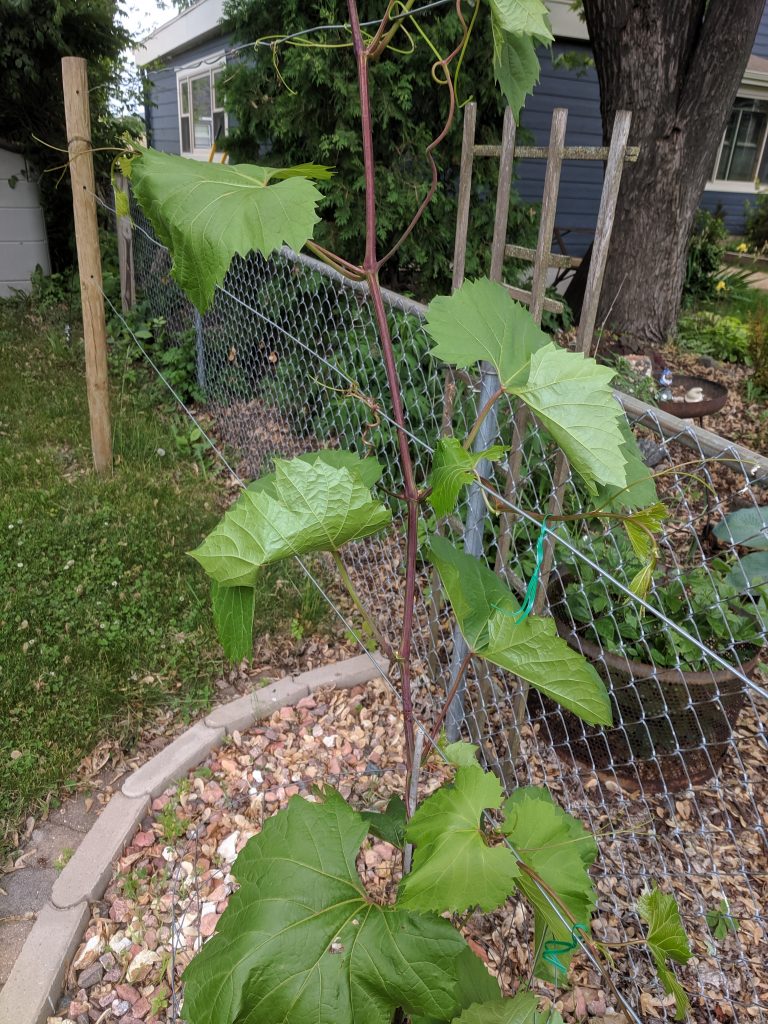Good news/bad news time on the backyard grapes. The good news is all five grapes are doing great. The three from last spring have reached the top trellis wire, and the two planted this spring are each growing lots of vegetation.

The bad news is two of the three trunks I trained this spring seem to be “bull canes.” Bull canes are overly vigorous shoots. They’re extra thick and have very long distances between the leaf nodes. Compare the picture of the Marquette pictured above with the Bluebell vine pictured below. Especially notice the length of the internodes, and the number and size of the leaves.

So what’s wrong with bull canes? According to my research, they tend to be less fruitful than normal canes, so they make a poor choice for fruiting canes. Even if you got the same number of fruiting shoots, the long internodes also mean fewer shoots-per-foot, so they take up more trellis space for the same yield. They’re bad as trunks, too. The long internode distance means it’s hard to position the new fruiting cane shoots, as they will tend to be further away from the trellis wires. Due to their extra thickness, they also take longer to harden off for winter, and so are less winter hardy than thinner shoots.
My sources weren’t extra clear on what causes bull canes. I think it’s one of those things that just happens. Some sources suggested that bull canes happen when the vine has more energy than it has places to put it. This matches my experience: I pruned these vines down to one single shoot to train as the trunk this year, and two of the three grew bull canes. The research suggested letting them grow a couple of shoots, and even letting some flowers begin to mature, to help the vine spread out its energy and so avoid growing bull canes.

Anyway, it’s hardly the end of the world. I’m going to continue training these trunks as if they were normal canes. I’ve already headed the vines and am beginning to train the lateral shoots to become next year’s fruiting canes. However, I’m mentally prepared for the trunks to die over winter, and I’m definitely planning to train up new trunks next year to replace the bull trunks, even if the bull trunks survive the winter.
There’s not a lot of information on bull trunks out there. Here are some of the sources of information I found:
- “Renewing Grapevines from Suckers Following Severe Winter Injury” by Annie Klodd at the University of Minnesota Enology Lab. 18 Jun 2019.
- “Bull cane control” forum thread from WineMakingTalk.com. 19 Jun 2014.
- “Growing Grapes in Minnesota” book by the Minnesota Grape Growers Association. Page 59 in the 2016 edition.
- “The Proof is in the Pruning” by Fritz Westover at Westover Vineyard Advising. 24 Jan 2018.